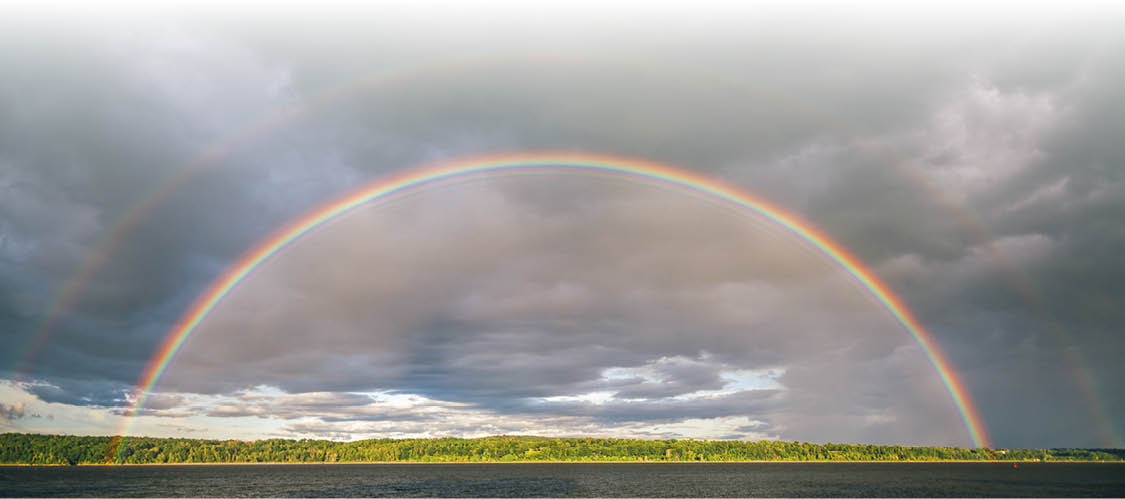In this issue
- Looking forward to a new administration
- Taking the Trump administration to court
- Colorado policy will protect water and health from PFAS
- Recent victories for our water that you might have missed
- Elections update
- Helping Clean Water Action and Clean Water Fund protect clean water
- Download this issue
Looking Forward: Musings About a New Administration
As we usher in a new administration here in Washington DC, it is our tradition to offer recommendations and predictions about what the White House and the executive branch agencies will do. Here at Clean Water, we are no exception. We have reason to be optimistic that the Biden administration will not only rebuild the Environmental Protection Agency (EPA) and reverse the damage done by this administration, but foster innovation to meet the old and new water quality challenges we face.
Are we going to protect all of the water?

Our readers have become accustomed to hearing from us about the ongoing debate about whether the Clean Water Act should protect small bodies of water like streams and wetlands. Regular news readers may have run into the “WOTUS” term — which stands for “Waters of the US.” The Clean Water Act’s complex programs are supposed to protect the “waters of the United States,” so knowing how those are defined is critical. While debate dates all the way back to the law’s passage in 1972, this has been an active policy question since Supreme Court decisions in 2001 and 2006 and subsequent actions of the Bush administration to limit coverage. Later, the Obama administration addressed the question and finalized the “Clean Water Rule,” to restore protections that were in place prior to 2001 to small water bodies that impact larger rivers, lakes, and bays downstream. Then came the Trump administration, who kept their campaign promise to reverse this progress. This ping-pong game has been active for almost 20 years and we don’t intend to let the game stop here.
President-elect Biden has committed to reversing Trump administration rollbacks of environmental protections and the question of Clean Water Act “jurisdiction” will no doubt be among those undertakings. Reversing rollbacks cannot be done with just a stroke of a pen, so the Environmental Protection Agency (EPA) will have to propose a new rule to reverse the “Dirty Water Rule” that was finalized in April 2020. A promising aspect of this will be a review of the science supporting protecting small streams and wetlands. To support the Clean Water Rule, the Obama Administration published the 2015 U.S. EPA Connectivity of Streams and Wetlands To Downstream Waters: A Review and Synthesis of the Scientific Evidence, which outlined the science to date that demonstrates the commonsense notion that pollution or destruction of smaller water bodies upstream impacts water quality for the larger water bodies they are connected to downstream.
EPA will need to review any new scientific information published since this report was compiled, which is actually good news. The science supports reversing the Dirty Water Rule, which leaves half the nation’s remaining wetlands and millions miles of streams unprotected. The Trump/Wheeler EPA did not offer scientific justification for putting streams and wetlands, which feed drinking water sources, filter pollution, and prevent flooding at risk. The Biden administration has promised to be driven by science, and this is one of many areas where that will be a welcome change.
It’s not an exaggeration to say that we’ve been engaged for almost twenty years on the question of what water the Clean Water Act should protect.
Getting to the source on PFAS chemicals
The more we look the more we find the notorious PFAS “forever” chemicals in our water, including drinking water sources. Water systems and their customers are poised to spend huge sums of money on treatment and yet more PFAS are released into the environment every day. PFAS are a class of chemicals that are used to make products grease proof, waterproof and stain resistant. A new administration must act quickly to use all available federal tools to address PFAS contamination. EPA’s May 2018 PFAS Action Plan (updated in 2019) outlines a fairly broad agenda for research and action across many parts of EPA. A new administration should get to work and prioritize using the Clean Water Act, the Clean Air Act, and other programs to crack down on PFAS pollution.
Getting back to the real basics
During this administration, EPA Administrators Pruitt and Wheeler both talked about getting EPA back to basics by focusing on the laws governing the agency’s work. They definitely focused on rolling back critical parts of some of the regulations implemented under those laws, especially the Clean Water Act. A new administration should focus on the basics that matter — protecting human health and the environment, relying on science, and ensuring that we have the tools to get the job done. This includes making sure that EPA and the state agencies that implement our key water laws — the Safe Drinking Water Act and the Clean Water Act — have enough staff and resources to keep pollution out of the water and make sure regulated water systems are meeting contaminant limits at the tap. These are enormous tasks but they are within our means and are widely supported — indeed expected — by the public.
Challenging the Trump Administration in Court to Protect Our Water
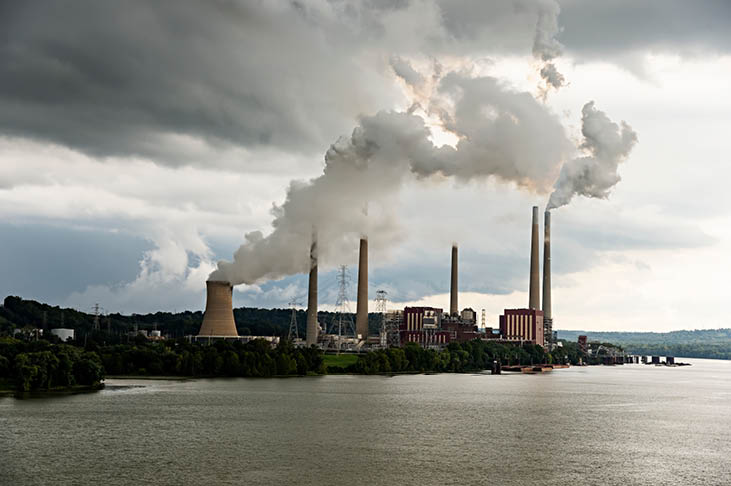
During 2020 Clean Water Action joined three lawsuits challenging the Trump administration’s rollbacks of vital safeguards to protect communities from harmful water pollution. Under the leadership of Andrew Wheeler, a former coal lobbyist, the U.S.Environmental Protection Agency (EPA) has put the interests of polluting companies above protecting human health and the environment. EPA’s actions over the past three years have virtually erased decades of progress toward achieving the Clean Water Act’s goal of fishable, swimmable, and drinkable water for everyone, and have unnecessarily put vulnerable communities at increased risk of being exposed to toxic coal ash and other dangerous pollution.
The first lawsuit we joined was in April 2020, challenging the Trump administration’s illegal and unscientific Navigable Waters Protection Rule (also known as the Dirty Water Rule), which guts the Clean Water Act by permanently stripping protections for too many streams and wetlands. Healthy streams and wetlands are vital parts of our nation’s natural infrastructure and critical to the health of our nation’s drinking water sources. This draconian rollback puts the drinking water for millions of people at risk. This rule is illegal because it is contrary to the Clean Water Act’s core purpose, which is to restore and maintain water quality across the country, and EPA failed to evaluate how eliminating protections for certain streams and wetlands would impact the nation’s water quality. The Southern Environmental Law Center filed the case in the U.S. District Court for the District of South Carolina on behalf of Clean Water Action and more than a dozen other conservation organizations.
In October and November Clean Water Action joined two other lawsuits challenging the Trump administration’s rollback of safeguards to protect communities from toxic coal ash and coal plant water pollution. Coal plants are some of the dirtiest polluters in the U.S. — they are responsible for dumping more heavy metals into rivers, streams, and lakes than any other industry, and they also generate coal ash, which is the second largest source of industrial waste in the country. Not only do these plants directly dump toxic wastewater into rivers and other water bodies, they store their toxic coal ash waste in unlined, unstable, and uncovered pits, often near drinking water sources.
In 2015 the Obama administration finalized the first-ever federal safeguards requiring coal plants to limit the amount of arsenic, lead, mercury, selenium, and other toxic metals in their wastewater discharges and directed plants to close and clean-up their leaking, unlined coal ash storage pits. Though both of these new safeguards were significant first steps towards reining in an industry that had been severely under-regulated for decades, environmental organizations did not think these rules were protective enough. They sued and subsequently won two separate lawsuits that concluded EPA must strengthen both of these regulations.
But instead of strengthening these rules as directed by the courts, the Trump administration weakened them even further at the behest of industry. Now Clean Water Action is challenging both of these rollbacks in court. Earthjustice is representing the organization in both of these cases, along with several other environmental plaintiffs.
It is possible that the incoming Biden administration may seek to stay or remand some or all three of our cases, which are all still pending in federal courts. Halting these cases would allow the new administration time to rescind and replace these weak regulations with stronger ones. However, any actions EPA takes under Biden will take time and likely be challenged by polluters in court. Clean Water Action and its allies are committed to remaining vigilant to ensure that Biden’s “Build Back Better” strategy prioritizes strengthening clean water protections and environmental safeguards undermined by the Trump administration. Clean Water will continue to push for strong limits on water pollution from coal plants and for clean-up of coal ash until communities around the country no longer suffer the burden of coal’s toxic legacy.
New Policy Will Safeguard Colorado Waters from Toxic PFAS
On July 14th Clean Water Action won a huge victory when the Colorado Water Quality Control Commission (WQCC) unanimously approved a policy that provides Colorado a clear path forward to address PFAS contamination in surface and ground waters.
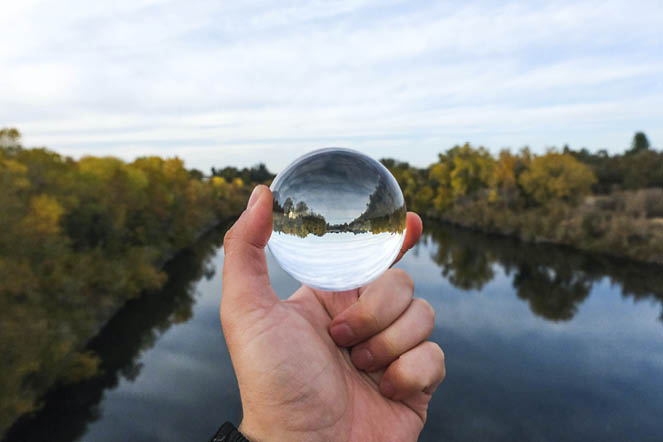
PFAS (per-and poly-fluoroalkyl substances) are a class of human-made chemicals that are toxic even in very low concentrations. Because they are stain- and oil-resistant and repel water, PFAS have been widely used since the 1950s in many common consumer products, including carpets, clothing, cookware, cosmetics, and food packaging. These “forever chemicals” are highly persistent and mobile in the environment, which means they bioaccumulate and travel unchanged through streams, rivers, and other water bodies, including drinking water sources. PFAS are linked to serious health problems including damage to liver, thyroid, and pancreatic function, immune system harm, hormone disruption, high cholesterol, and cancer.
Despite the serious health impacts from PFAS, there are no federal regulations to control these chemicals in surface water or drinking water, so states around the country have begun to adopt their own regulations and policies to protect residents.
PFAS contamination is widespread in Colorado
A major source of PFAS in Colorado is from fire fighting foams. Communities living near air force bases or fire stations have drinking water sources contaminated with PFAS, including in El Paso, Boulder, and Adams Counties. Residents in El Paso County living near Peterson Air Force Base have on average 2-12 times more PFOS, PFOA, and PFHxS (three types of PFAS) in their blood than the national average. The Denver metro area is also contaminated with PFAS, including at Buckley Air Force Base and at the Suncor Refinery, which discharges high levels of PFOA and PFOS into Sand Creek.
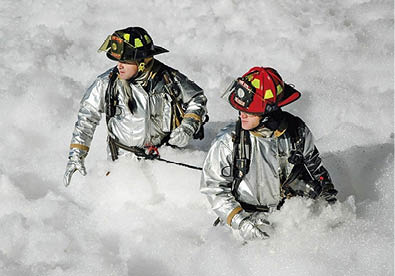
Results from a PFAS water sampling project released by Colorado Department of Public Health and the Environment (CDPHE) in June 2020 revealed that every river, stream, and reservoir sampled — including every drinking water source — had detectable levels of PFAS, some at concentrations that would exceed protective limits set by other states. Only five percent of surface water segments and half of community drinking water systems in Colorado have been tested, which means there is still a lot we don’t know about the extent of PFAS contamination in our state. Twenty percent of Colorado’s population relies on private wells, yet almost none of them have been tested for PFAS.
In November CDPHE released the results of their PFAS discharger survey. This survey was conducted to gain a better understanding of which facilities that discharge to state waters (i.e., those that have a Clean Water Act discharge permit) use or store products containing PFAS. Approximately 200 facilities in Colorado reported a known PFAS presence, such as fire fighting foam or other PFAS-containing product at an industrial facility, or possible PFAS passing through a public wastewater treatment plant. The state will use this information to determine whether to require PFAS monitoring and/or effluent limits at certain facilities.
How will Colorado’s new policy protect our water?
Under this new policy CDPHE will monitor and limit PFAS discharges in water pollution permits. CDPHE will also conduct source investigations and water sampling to identify potential areas of PFAS contamination in the state. It may also use this policy to identify rivers, streams, or lakes impaired or threatened by PFAS pollution and develop plans to clean them up. Ground and surface waters used for drinking water will be prioritized for protection and clean-up.
A key piece of this policy is source control, which involves identifying facilities dumping PFAS in Colorado waters, whether directly or by sending them to wastewater treatment plants. Source control has been an effective approach in Michigan, where there was a substantial drop in the amount of PFAS facilities discharged to wastewater treatment plants once these polluters were identified. Source control is important because we should not be shifting the burden of paying to clean-up PFAS pollution on to downstream water systems and their customers. These toxic, human made chemicals should have never been allowed to get into our drinking water sources in the first place and the industries profiting from their use should pay to clean them up.
Absent federal regulations, Colorado must set its own regulations
Though Colorado’s new PFAS policy is a significant step forward, in order to fully protect our communities, the state must do more than just use its existing regulatory authority to control these chemicals. Federal PFAS regulations for drinking water and surface water are likely years away and Colorado should not wait. In addition to watchdogging how CDPHE carries out this policy to ensure it’s doing everything it can to protect our water and communities, Clean Water will continue to push the state to set its own maximum contaminant levels (MCLs) for PFAS in drinking water and to set strong numeric water quality standards for surface water and groundwater.
Recent Victories for our Water
Persistence pays off. Here are some victories for Clean Water that you might have missed this year.
- California protects firefighters and our water from toxic PFAS chemicals: In a year when unprecedented crises have taken up the attention of state government, California legislators and the Governor agreed on the importance of action to remove this massive source of PFAS contamination of our water. Clean Water initiated SB 1044 in 2019 in partnership with state firefighters and environmental partners. SB 1044 will phase out the use of PFAS-containing firefighting foams, which are used for Class B liquid fuel fire (think oil and petroleum), replacing them with effective non-PFAS alternatives.
- A landmark environmental justice bill in New Jersey: On September 18th, after decades of local struggle and grassroots advocacy, New Jersey made history. Governor Murphy signed into law a first of its kind Environmental Justice Bill (S232). The law will direct the NJ Department of Environmental Protection (DEP) to deny or condition certain permits due to cumulative, disproportionate impacts of pollution in overburdened communities. It is a beacon for environmental justice (EJ) communities across every state and can pave the way for comprehensive national legislation currently being offered by US Senator Booker.
- New Jersey passes strongest plastic waste bill in the country: The legislation, which goes into effect in spring 2022, bans single-use plastic carryout bags and polystyrene foam food service ware, allows plastic straws on demand, and phases-out paper bags at large grocery stores. The bill now goes to the desk of Gov. Murphy and he has 45 days to act on the legislation.
- Michigan revokes easement for Line 5: After years of advocacy from Clean Water Action and allies to shut down Line 5, Governor Whitmer started the process by revoking the 1953 easement for the dangerous pipeline. For 67 years, this pipeline has risked the Great Lakes and drinking water for millions.
Election Update
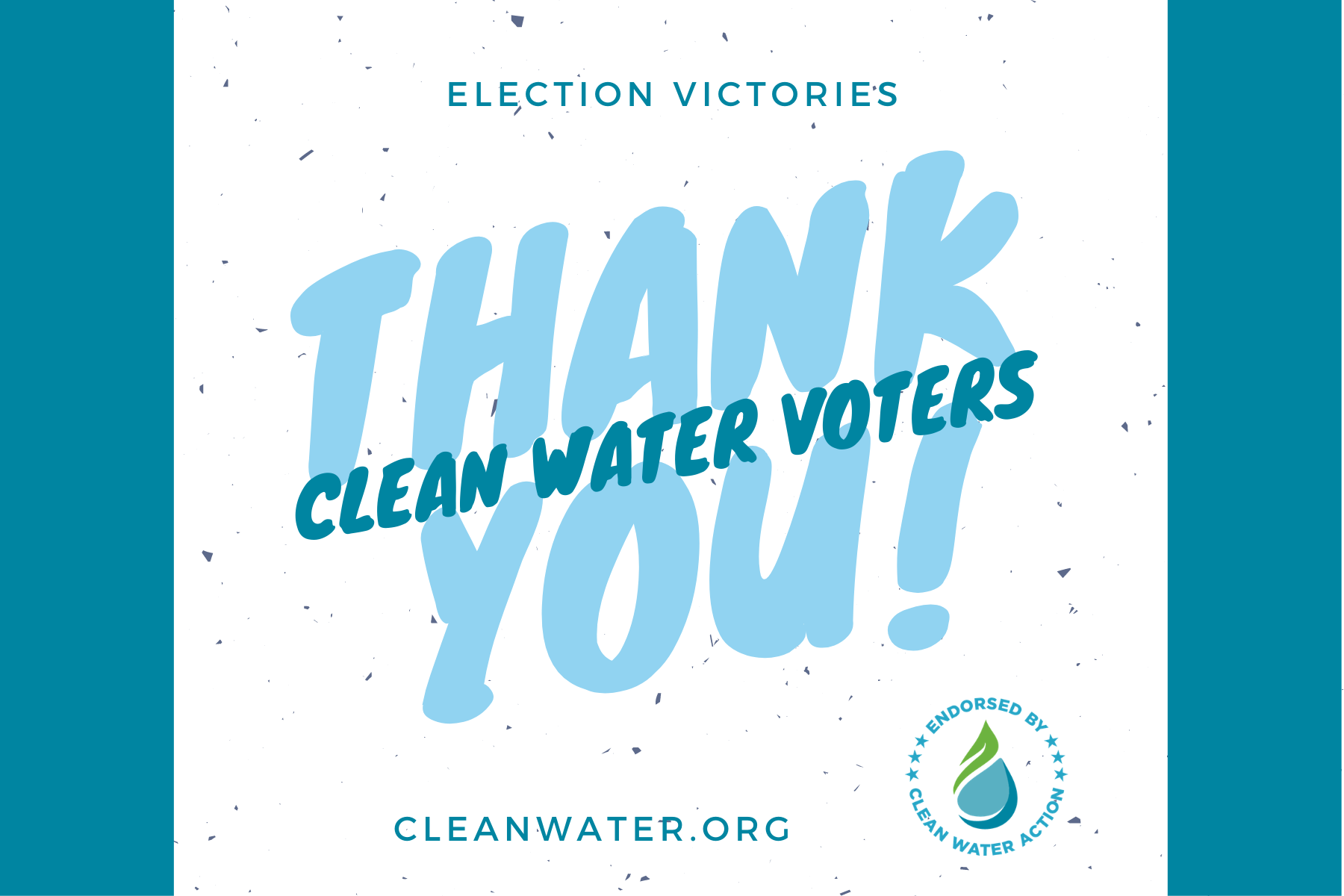
In the weeks and months leading up to Election Day, Clean Water Action didn’t just work to turn out as many votes as possible for Joe Biden and Kamala Harris, along with other clean water leaders from mayors’ offices to state houses to Congress. The organization was also planning for what would happen on Election Day and once the polls closed. There was a genuine concern that the nation might have been faced with a constitutional crisis, that millions of voters would be wrongly disenfranchised, that our elections systems could have broken down. Along with allies Clean Water Action developed campaign plans focused on making sure every vote was counted and that the vote was protected.
And then a fairly normal thing happened — the systems held. There were some small problems — a few systems went down temporarily and there were lines that were far too long. Some last minute court rulings changed the rules for mail-in ballots in a few states. But outside of those issues, the elections went smoothly. The nation’s elections administrators — all 10,500 of them across the country — and the hundreds of thousands of volunteers — were ready. Despite the pandemic and the newness of voting by mail for many people and counties, despite the lack of proper funding from Congress, despite unprecedented turnout, despite the false claims about fraud from certain candidates and their surrogates, these elections officials were prepared. They are heroes.
It’s exactly what the nation needed.
Donald Trump still has not conceded, and he probably never will. The Trump campaign is suing, attempting to overturn the elections. The lawsuits won’t change the result — the people have spoken and Joe Biden won convincingly. Unfortunately these efforts are undermining faith in our elections. They could set the stage for more draconian Voter ID rules and other policies that could make it harder to vote.
That’s why it is so important that Clean Water voters joined more than 80 million other voters to elect leaders who will put people first. Voters made it clear that it’s time for bold action to address climate change, that the nation needs to do more, not less to protect clean water, and that we need to strengthen our democracy. After 4 years of attacks on our environment, 4 years of putting corporate special interests first, 4 years of assaults on our democracy, there is light at the end of the tunnel.
In addition to electing Joe Biden and Kamala Harris, clean water voters also pushed candidates across the country over the finish line. Senator Gary Peters won re-election in a tight race in Michigan. Representatives Josh Gottheimer, Andy Kim, Tom Malinowski, and Mikie Sherrill were re-elected in New Jersey. Senator Ed Markey will continue to represent Massachusetts in the Senate. Clean Water Action members didn’t just come out to vote — they also volunteered at phone banks to call voters in support of candidates in Pennsylvania. Members sent emails demanding that elected officials join us in calls to count every vote, and clean water voters made sure their friends and family knew how to vote by mail.
As of publication of this newsletter, the electors have cast their ballots and Inauguration Day is approaching. Clean Water Action is getting ready to work with the Biden administration. 2020 was a difficult year, but Clean Water Action is looking toward 2021 with hope.
Give the Gift of Clean Water

Despite the long year we’ve all been through, there are reasons to be hopeful. This is the season of hope, after all. And you can be part of that hope by joining an organization leading the way to protect clean water, tackle the climate crisis, and ensure democracy works for all of us.
Give the gift of Clean Water this holiday season and help power our campaigns in 2021!
Clean Water needs you today. This past year was one of the most difficult the organization ever faced, but the support of members and supporters helped us get through.
The pandemic has impacted Clean Water Action greatly and we’ve had to shift the way we work: hosting more online events, movie screenings, webinars, town halls, and launching a new Clean Water podcast so that we can continue to educate, advocate, and act for our water and health.
We are very excited for what’s ahead in 2021! We finally get to say good riddance to one of the worst Presidents in history for our environment and are enthusiastic to work with the new Biden-Harris Administration. We are hopeful for a brighter 2021 and with your support we know we can achieve our goals!
Here are a few of the campaigns Clean Water will be leading in the new year:
- Clean water is a fundamental right and necessary to sustain life and economic livelihood, yet 30 million people lack access to clean water in America right now. We will advocate for passage of the Clean Water for All Act to overturn Trump’s dangerous “Dirty Water Rule” which eliminates protections for half our nation’s remaining wetlands and millions of stream miles.
- Climate change must be a priority. We will work with the new administration to ensure the U.S. achieves a 100% clean energy economy and reach net-zero emissions no later than 2050.
- Plastic pollution continues to harm our health and water. We’ll continue to lead the way with our ReThink Disposable program to help businesses, communities, and schools make the switch from single-use to reusables to save money and go green.
- To build a democracy that truly represents we, the people, Clean Water Action will advocate for the For the People Act, comprehensive legislation aimed at expanding access to the ballot box, reducing money in politics, and strengthening ethics laws.
